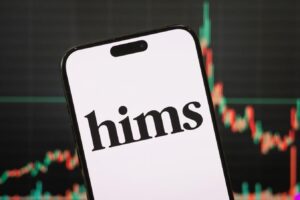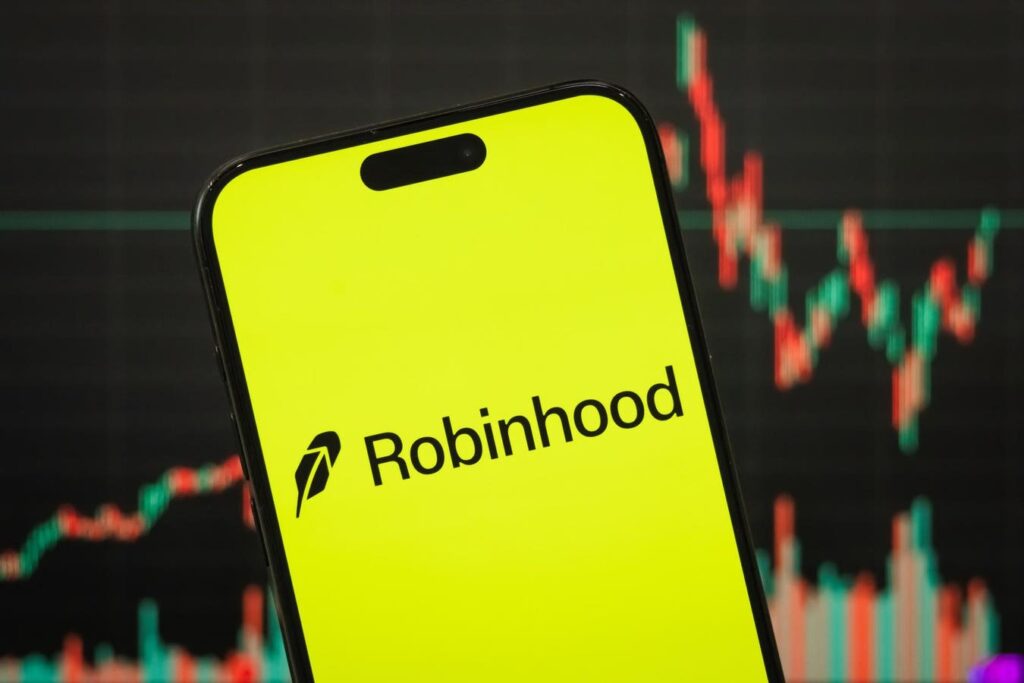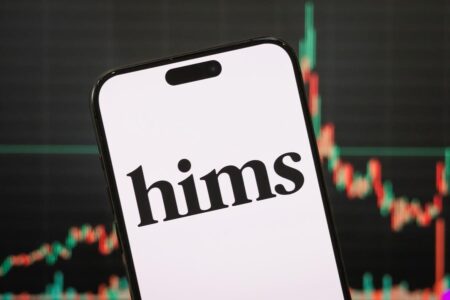Robinhood Inc. (NASDAQ: HOOD) has experienced a roughly 60% year-to-date rise, significantly outperforming the broader NASDAQ index which is down around 1% due to uncertain macroeconomic conditions including ongoing tariffs and trade tensions. Recently, Robinhood announced plans to acquire Canadian crypto company WonderFi for $180 million as part of its international expansion strategy, a move potentially bolstered by cryptocurrency’s resurgence during President Trump’s second term.
Even if we look at a slightly longer period, HOOD stock has delivered substantial long-term growth, soaring over 600% since early 2023. This impressive performance can be attributed to three key factors:
- A significant 235% increase in the company’s price-to-sales (P/S) ratio, rising from 5.3 in 2022 to the current 17.6
- A substantial 140% growth in revenue, increasing from $1.4 billion to $3.3 billion during the same period; partially offsetting these positive drivers is
- A 4% increase in outstanding shares, now totaling 910 million
We’ll delve into the specifics of these factors. While HOOD stock has had a great run, if you want an upside with a smoother ride than an individual stock, consider the High Quality portfolio, which has outperformed the S&P, and clocked >91% returns since inception. Separately, see –What’s Next For UNH Stock After Its Recent 50% Fall?
Factors Fueling Robinhood’s Revenue Growth
Robinhood’s revenue surge in the last three years is underpinned by strong user acquisition and effective monetization. The platform has significantly expanded its user base, now boasting over 25 million funded customers. This growth includes a notable increase in Robinhood Gold subscribers, reaching 2.6 million. Driving revenue from this expanded base are several key factors: booming cryptocurrency and options trading, consistent growth in equities, and a significant boost from higher interest rates on user deposits.
Consequently, Robinhood has seen a dramatic increase in average revenue per user (ARPU), more than doubling from $60 in 2022 to $122 in 2024. This enhanced monetization, coupled with a tripling of assets under custody (AUC) from $62.2 billion to $192.9 billion during the same period, reflects the platform’s success. Strategic acquisitions like TradePMR further suggest a trajectory of continued revenue growth.
Robinhood’s Billion-Dollar Profitability Shift
Robinhood has achieved a remarkable profitability transformation. Over the last twelve months, the company reported a net profit of $1.6 billion, a significant turnaround from the $1.0 billion loss experienced in 2022. This dramatic shift is the result of several key factors working in concert: expanding revenue across its various business segments, efficient cost management, and the benefits of operational leverage.
Furthermore, strategic financial management, particularly the optimization of net interest income, has enabled a greater portion of this increased revenue to flow through to the bottom line.
While occasional non-recurring benefits, such as tax adjustments, have provided additional lift, the overall trend solidifies Robinhood’s evolution from a primarily growth-focused company to one now delivering both expansion and substantial earnings.
Surging Valuation Multiples Reflects Positive Investor Sentiment
The dramatic increase in Robinhood’s Price-to-Sales (P/S) ratio, from 5.3x in 2022 to the current 17.6x, reflects a significant shift toward positive investor sentiment. This heightened confidence stems from Robinhood’s strong market presence as a leading retail investment platform, especially among younger demographics and in high-growth sectors like crypto and options. The company’s proven ability to rapidly grow its user base and revenue while improving profitability has fueled expectations of continued strong future growth. Consequently, investors are now willing to pay a much higher multiple for Robinhood’s sales, driving the substantial expansion in its valuation.
Navigating a Challenging Market Environment
Robinhood’s financial evolution took place within a challenging market environment. The 2022 inflation shock triggered a significant market correction, during which HOOD stock experienced a sharp 63% decline from its January 2022 high of $18 to a June 2022 low of $7. This downturn was more severe than the S&P 500’s 25.4% peak-to-trough decline. Despite these turbulent conditions, Robinhood demonstrated underlying resilience. However, its recovery was gradual, with the stock only returning to pre-crisis levels by March 2024, highlighting both the difficult market backdrop and the company’s eventual navigation of this volatile period.
Is HOOD Still a Buy at $60+?
Trading at $63, Robinhood’s stock presents a mixed investment case, particularly when examining its valuation metrics. The current Price-to-Sales (P/S) ratio of 18x is significantly higher than its three-year average of 8x, raising potential valuation concerns despite the company’s notable operational improvements.
While recent revenue growth and enhanced profitability do warrant some multiple expansion, the current valuation appears to largely reflect numerous positive factors, including Robinhood’s international expansion plans.
Historically, the company has achieved an average sales growth of 23% over the past three years, with future projections indicating high-teens average growth for the next three years. Although the WonderFi acquisition and other international initiatives offer potential upside, this may already be factored into the stock’s current price. We believe that investors interested in HOOD stock would likely benefit from waiting for a pullback.
That said, those concerned about near-term volatility should consider appropriate strategies, such as the Trefis High Quality (HQ) Portfolio strategy, with a collection of 30 stocks, which has a track record of comfortably outperforming the S&P 500 over the last four-year period. Why is that? As a group, HQ Portfolio stocks provided better returns with less risk versus the benchmark index; less of a roller-coaster ride, as evident in HQ Portfolio performance metrics.
Read the full article here
















